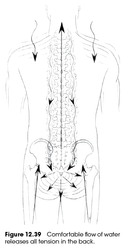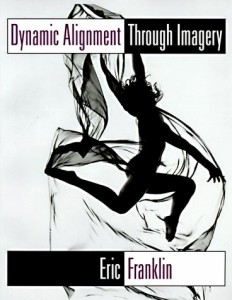One way to improve posture so as to avoid piling up strenuous tensions is to think of it as a continuous flow.
The image of flow is a tool dear to (re) educational somatic disciplines (e.g. Feldenkrais or Alexander techniques), and of course to dancers, whom it helps perfect their art.
In the practice book Dynamic Alignment Through Imagery, we read:
“The concept of flow is crucial to creating dynamic alignment. Just as we have said that your mind can sculpt your body into a certain posture, your mind can also help your body flow into better alignment. And here is the good news: A flow cannot be held because it then ceases to be a flow; therefore alignment based on this notion cannot become rigid. If you begin to realize that your alignment is flowing, constantly changing, even if on a cellular or molecular level, you are able to take charge of this flow. Using imagery, you can constantly guide your alignment toward increased efficiency without ever holding onto it. If you were to stop the flow, even in what appears to be a biomechanically well-aligned position, tension would ensue. The building blocks of our body, our cells, are both filled and surrounded by fluids. Therefore fluid motion is inherent in our very structure.”
In a resting still position, the image of flow can also be used to “flush” muscular tensions:
“Imagine a river flowing down your back, expelling all muscular tension (figure 12.40). Visualize the tension points as little rocks and pieces of wood carried out with the flow. Imagine the murky water turning crystal clear. Watch the river flow down through the gutters between your spine and ribs to flush out all remaining tension”
Dynamic Alignment Through Imagery, by Eric Franklin.



